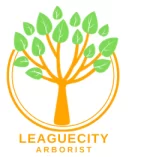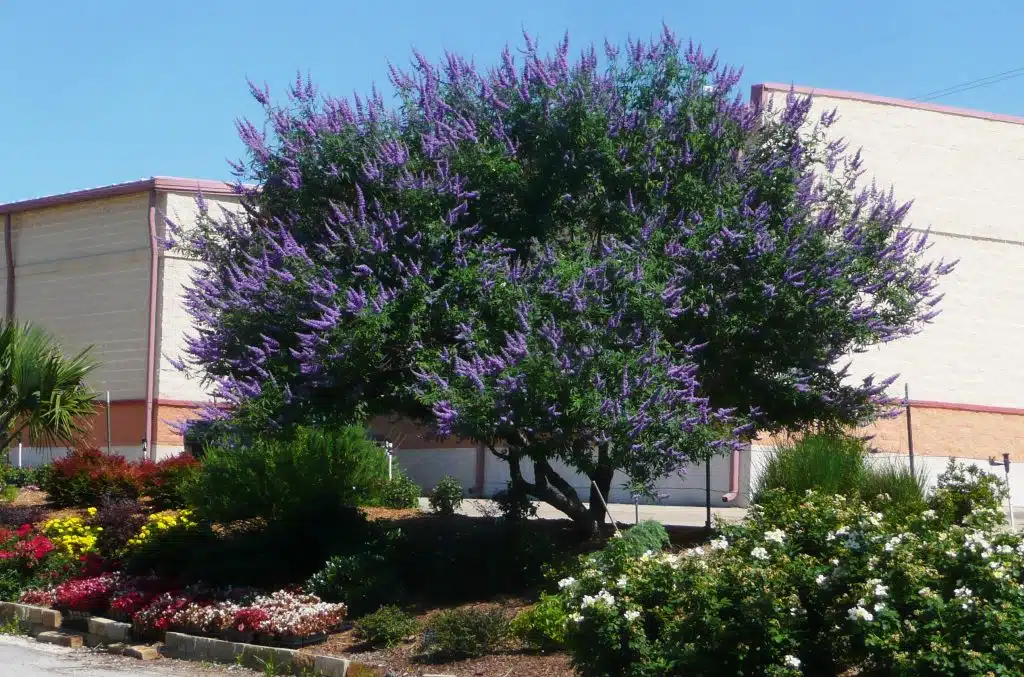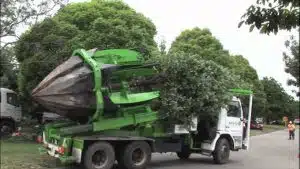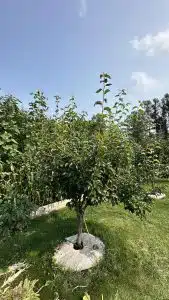Native trees and bushes stand guard over Texas’ diverse environment, protecting the region’s natural history. Welcome to League City Arborist, your entrance to discovering the rich tapestry of Texas natural plants. In this beginning voyage, we’ll look at the beauty, hardiness, and ecological relevance of these indigenous plants. From the spreading canopies of majestic oaks to the exquisite blossoms of native shrubs, each species offers a narrative about adaptation and survival in the Lone Star State’s distinct environment. Join us as we explore the world of Texas native trees and shrubs, discovering their importance in supporting local ecosystems, improving urban landscapes, and developing a stronger connection to the land. Together, let us discover the boundless mysteries that await.
Understanding Texas native trees and shrubs
Understanding native flora is critical to comprehending the ecological diversity of Texas environments. Native plants, such as trees and bushes, have evolved over time to flourish in the region’s specific climate, soil conditions, and ecosystems. They serve an important role in preserving local biodiversity by providing habitat and food for native wildlife species like birds, insects, and mammals. Furthermore, native flora conserves water, prevents soil erosion, and improves soil fertility, all of which contribute to environmental health in general. Learning about native flora helps us understand how ecosystems are interconnected and how important it is to preserve and restore natural habitats. Whether it’s towering oak trees or fragile wildflowers, each native plant species adds to Texas’ complicated web of life, giving it a place of lasting natural beauty and ecological value.
Advantages of Native Landscaping
Native landscaping offers various benefits that go beyond aesthetics, making it a wise choice for both homeowners and the environment. One key advantage is water conservation. Native plants have evolved to flourish in Texas’ climate, requiring little water once established. This not only cuts water usage but also helps to protect local water supplies.
Furthermore, native landscaping encourages biodiversity by providing habitat and food for native wildlife species. Native plants help to maintain ecosystem health by attracting birds, butterflies, and pollinators, resulting in a more balanced and resilient environment. Furthermore, native landscapes require less upkeep than non-native ones because they are naturally adapted to local soil conditions and pests. This translates to reduced need for chemical pesticides and fertilizers, resulting in healthier soil and air quality.
Overall, embracing native landscaping offers a sustainable and environmentally friendly approach to landscaping that conserves resources, supports biodiversity, and enhances the natural beauty of Texas landscapes.
Professional Tree Care Services
Professional tree care services are essential for keeping Texas landscapes healthy and beautiful. These services include a variety of specialized duties, such as tree pruning, trimming, removal, and disease management. Certified arborists have the knowledge and equipment needed to evaluate tree health, detect potential problems, and implement effective solutions. Pruning is an important component of professional tree care. It involves deliberately removing branches to improve tree structure, promote healthy growth, and reduce the danger of storm damage. Additionally, professional arborists offer tree pruning services to improve aesthetics, remove deadwood, and maintain clearance around structures and utility lines.
Professional arborists use safe and efficient ways to ensure minimal disruption to the surrounding landscape when removing trees that are sick, damaged, or hazardous. Overall, licensed arborists provide expert tree care services that are critical for protecting the vitality and longevity of Texas native trees, increasing safety, and improving the overall appearance of residential and commercial sites.
Native Tree Planting Tips
Planting native trees in Texas necessitates careful planning and suitable practices to maintain their long-term viability and health. Here are some important tips for native tree planting.
Choose native tree species that are appropriate for your temperature, soil type, and site requirements. Consider things like solar exposure, drainage, and space requirements.
Prepare the planting location by removing weeds, pebbles, and rubbish. To increase aeration and drainage, loosen the soil, and consider enriching it with organic materials like compost. Planting Depth: Dig a hole that is somewhat broader but not deeper than the tree’s root ball. Place the tree so that the top of the root ball is even with the surrounding soil surface.
Water the newly planted tree thoroughly right away to help settle the soil and reduce transplant shock. Water the tree on a regular basis during its establishment, especially during dry months. Spread a layer of mulch around the tree’s base to keep it moist, control weeds, and regulate soil temperatures. Leave a gap between the mulch and the tree trunk to prevent moisture buildup and rot. If necessary, stake the tree to provide support and stability until it matures. Use flexible ties to protect the trunk and branches.
Promoting Biodiversity
Promoting biodiversity in Texas through native tree planting is an important step toward restoring ecological balance and strengthening local ecosystems. Native trees provide critical habitat and food sources for a wide variety of animals, including birds, insects, and mammals. Planting a diversity of native tree species can help to build a rich and resilient environment that supports a diverse range of plant and animal species.
Native trees not only support wildlife but also aid to preserve native plant groups and genetic diversity within ecosystems. This, in turn, increases ecosystem resilience to external stresses such as climate change, disease, and habitat loss.
By encouraging biodiversity through native tree planting, homeowners, landscapers, and communities may assist in conserving Texas’ natural history while also ensuring the health and vitality of local ecosystems for future generations.
Related Posts:
Drought-Tolerant Species
In Texas’ arid environment, choosing drought-tolerant native tree species is critical for developing sustainable and resilient landscapes. Several natural tree species are well-adapted to thrive in drought circumstances and require little water once planted.
One such species is the Texas live oak (Quercus virginiana), which is recognized for its deep root structure and ability to tolerate extended periods of drought. Another drought-tolerant alternative is the Mexican white oak (Quercus polymorpha), which is prized for its beautiful leaves and tolerance of dry soil. Furthermore, the Texas redbud (Cercis canadensis var. texensis) is a popular ornamental tree with excellent drought tolerance once established. Its vivid pink blossoms brighten up the landscape while requiring less water than non-native plants.
By including drought-tolerant native tree species into your landscape design, you can save water, decrease upkeep, and create stunning outdoor places that flourish in Texas’ harsh climate.
FAQS
What are the most popular Texas native trees for urban landscapes?
Texas live oak, Texas redbud, and Texas mountain laurel are popular urban native trees known for their adaptability and beauty appeal.
How can I use native plants in my garden to attract wildlife?
You may make your garden a welcoming habitat for birds, butterflies, and other beneficial species by planting native plants that provide food, shelter, and nesting sites.
Are there any native shrubs that are ideal for xeriscaping?
Yes, certain native shrubs, such as cenizo (Texas sage), agarita, and flame acanthus, are ideal for xeriscaping since they require little water once established and provide year-round appeal through their leaves and blossoms.
What are the advantages of planting native trees and plants in Texas?
Planting native trees and shrubs in Texas has various advantages, including reduced water consumption, improved soil health, higher biodiversity, and greater resilience to harsh weather events.
How can I preserve my native trees and shrubs from pests and diseases?
Regular monitoring, good cultural practices, and early intervention are essential for reducing pest and disease problems in native trees and shrubs. Integrated pest control tactics and professional arborist advice can assist address any emerging issues successfully.
Conclusion
In conclusion, incorporating native trees and shrubs into Texas landscapes has multiple benefits, including water conservation, biodiversity support, and resistance to environmental problems. Planting native plants allows homeowners to build sustainable and visually pleasing landscapes while also helping to preserve local ecosystems. Professional tree care services improve the health and longevity of native trees, guaranteeing their continuous contribution to the beauty and functionality of both urban and rural settings. As land stewards, we have a responsibility to favor native plantings and enhance biodiversity in our communities. By working together to plant and care for native trees, we can protect Texas’ natural legacy for future generations to enjoy.




